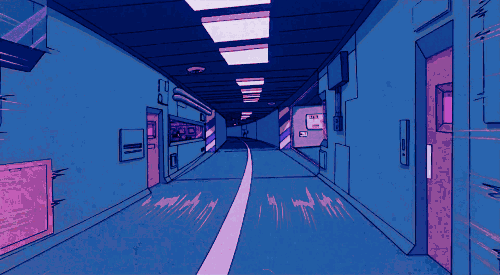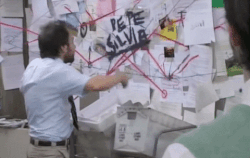#Estimate Software Development Cost
Explore tagged Tumblr posts
Text
0 notes
Text
#app development cost#app development#mobile app development cost#mobile app development#app development outsourcing cost#cost of app development#software development#app development company#app development costs#future of ai app development#mobile app development cost estimate#app development cost breakdown#ai app development company#ai development company#app development estimate cost#how much app development cost#app development for startups
1 note
·
View note
Text
#software cost estimation#software development cost#custom software development cost#cost estimation software#app development cost calculator#Software Cost Calculator
0 notes
Text
Estimating Rummy Game Development Costs in 2024
Rummy games have surged in popularity within India's gaming landscape, with the online real rummy market projected to hit an impressive ₹1.4 billion by 2024, according to Statistica. This exponential growth signifies a burgeoning market ripe for exploration, making Rummy game development an enticing prospect for businesses aiming to capitalize on this trend.
Market Expansion and Preference: The appeal of Rummy extends beyond Indian borders, cementing its status as one of the top 5 most favored card games globally. This widespread popularity, particularly in India, is further fueled by the increasing penetration of mobile devices, which provides accessibility to a larger audience.
Preference between Standalone Apps and Multigaming Integration: Both standalone Rummy applications and integration into multigaming platforms garner significant traction among players. However, overlooking Rummy's integration into multi-gaming platforms could be a strategic misstep. Integrating Rummy into a multi-gaming platform not only enhances user engagement but also broadens the platform's appeal, potentially attracting a diverse user base.
Why Real-Money Platforms Favor Rummy: Despite its distinction from traditional casino games, Rummy offers players a compelling gaming experience with minimal house advantage. This unique characteristic, coupled with its enduring popularity, makes Rummy an attractive proposition for real-money gaming platforms. The inclusion of Rummy often translates into higher player engagement and revenue generation for these platforms.
Game Development Considerations: Various factors influence the cost and scope of Rummy game development. Critical decisions include choosing between standalone and multigaming platforms, as well as selecting Rummy modes. Each mode, whether it be Points, Pool, Deals, or Raise, comes with its own set of complexities and development requirements. Additionally, integrating features such as tournaments and events can significantly enhance user engagement but may also impact development timelines and costs.
Mobile Platform and Additional Features: When developing a Rummy game for mobile platforms, businesses must weigh the pros and cons of native versus cross-platform applications. Cross-platform solutions offer versatility by catering to multiple mobile operating systems, thereby maximizing reach and minimizing development efforts. Furthermore, the inclusion of additional features beyond the basic gameplay, such as social features, in-app purchases, and player customization options, can elevate the gaming experience and drive user retention.
Cost Estimation: The cost of Rummy game development can vary significantly depending on project requirements and complexity. Basic Rummy games may start at around ₹5 lakh, catering to simpler features and platforms, while more advanced projects with extensive features and multi-platform support can cost upwards of ₹1 crore. It's essential for businesses to collaborate with experienced development partners like Enixo Studio to accurately assess project scope and obtain customized cost estimates.
Conclusion: As the Rummy gaming market continues to flourish, businesses must carefully evaluate their development strategies to capitalize on this lucrative opportunity effectively. By considering factors such as platform integration, feature set, and development costs, businesses can navigate the dynamic landscape of Rummy game development and position themselves for success in India's gaming industry. For reliable and efficient development services, companies can leverage the expertise of Enixo Studio to achieve their Rummy game development goals.
#Rummy game development cost#Rummy app development cost#Rummy game cost estimation#Rummy game budgeting#Rummy software development pricing#Rummy game development expenses#Rummy game development pricing#Rummy game cost breakdown#Rummy game development investment#Rummy game development quote
1 note
·
View note
Note
nightshade is basically useless https://www.tumblr.com/billclintonsbeefarm/740236576484999168/even-if-you-dont-like-generative-models-this
I'm not a developer, but the creators of Nightshade do address some of this post's concerns in their FAQ. Obviously it's not a magic bullet to prevent AI image scraping, and obviously there's an arms race between AI developers and artists attempting to disrupt their data pools. But personally, I think it's an interesting project and is accessible to most people to try. Giving up on it at this stage seems really premature.
But if it's caption data that's truly valuable, Tumblr is an ... interesting ... place to be scraping it from. For one thing, users tend to get pretty creative with both image descriptions and tags. For another, I hope whichever bot scrapes my blog enjoys the many bird photos I have described as "Cheese." Genuinely curious if Tumblr data is actually valuable or if it's garbage.
That said, I find it pretty ironic that the OP of the post you linked seems to think nightshade and glaze specifically are an unreasonable waste of electricity. Both are software. Your personal computer's graphics card is doing the work, not an entire data center, so if your computer was going to be on anyway, the cost is a drop in the bucket compared to what AI generators are consuming.
Training a large language model like GPT-3, for example, is estimated to use just under 1,300 megawatt hours (MWh) of electricity; about as much power as consumed annually by 130 US homes. To put that in context, streaming an hour of Netflix requires around 0.8 kWh (0.0008 MWh) of electricity. That means you’d have to watch 1,625,000 hours to consume the same amount of power it takes to train GPT-3. (source)
So, no, I don't think Nightshade or Glaze are useless just because they aren't going to immediately topple every AI image generator. There's not really much downside for the artists interested in using them so I hope they continue development.
992 notes
·
View notes
Text
In March 2007, Google’s then senior executive in charge of acquisitions, David Drummond, emailed the company’s board of directors a case for buying DoubleClick. It was an obscure software developer that helped websites sell ads. But it had about 60 percent market share and could accelerate Google’s growth while keeping rivals at bay. A “Microsoft-owned DoubleClick represents a major competitive threat,” court papers show Drummond writing.
Three weeks later, on Friday the 13th, Google announced the acquisition of DoubleClick for $3.1 billion. The US Department of Justice and 17 states including California and Colorado now allege that the day marked the beginning of Google’s unchecked dominance in online ads—and all the trouble that comes with it.
The government contends that controlling DoubleClick enabled Google to corner websites into doing business with its other services. That has resulted in Google allegedly monopolizing three big links of a vital digital advertising supply chain, which funnels over $12 billion in annual revenue to websites and apps in the US alone.
It’s a big amount. But a government expert estimates in court filings that if Google were not allegedly destroying its competition illegally, those publishers would be receiving up to an additional hundreds of millions of dollars each year. Starved of that potential funding, “publishers are pushed to put more ads on their websites, to put more content behind costly paywalls, or to cease business altogether,” the government alleges. It all adds up to a subpar experience on the web for consumers, Colorado attorney general Phil Weiser says.
“Google is able to extract hiked-up costs, and those are passed on to consumers,” he alleges. “The overall outcome we want is for consumers to have more access to content supported by advertising revenue and for people who are seeking advertising not to have to pay inflated costs.”
Google disputes the accusations.
Starting today, both sides’ arguments will be put to the test in what’s expected to be a weekslong trial before US district judge Leonie Brinkema in Alexandria, Virginia. The government wants her to find that Google has violated federal antitrust law and then issue orders that restore competition. In a best-case scenario, according to several Google critics and experts in online ads who spoke with WIRED, internet users could find themselves more pleasantly informed and entertained.
It could take years for the ad market to shake out, says Adam Heimlich, a longtime digital ad executive who’s extensively researched Google. But over time, fresh competition could lower supply chain fees and increase innovation. That would drive “better monetization of websites and better quality of websites,” says Heimlich, who now runs AI software developer Chalice Custom Algorithms.
Tim Vanderhook, CEO of ad-buying software developer Viant Technology, which both competes and partners with Google, believes that consumers would encounter a greater variety of ads, fewer creepy ads, and pages less cluttered with ads. “A substantially improved browsing experience,” he says.
Of course, all depends on the outcome of the case. Over the past year, Google lost its two other antitrust trials—concerning illegal search and mobile app store monopolies. Though the verdicts are under appeal, they’ve made the company’s critics optimistic about the ad tech trial.
Google argues that it faces fierce competition from Meta, Amazon, Microsoft, and others. It further contends that customers benefited from each of the acquisitions, contracts, and features that the government is challenging. “Google has designed a set of products that work efficiently with each other and attract a valuable customer base,” the company’s attorneys wrote in a 359-page rebuttal.
For years, Google publicly has maintained that its ad tech projects wouldn’t harm clients or competition. “We will be able to help publishers and advertisers generate more revenue, which will fuel the creation of even more rich and diverse content on the internet,” Drummond testified in 2007 to US senators concerned about the DoubleClick deal’s impact on competition and privacy. US antitrust regulators at the time cleared the purchase. But at least one of them, in hindsight, has said he should have blocked it.
Deep Control
The Justice Department alleges that acquiring DoubleClick gave Google “a pool of captive publishers that now had fewer alternatives and faced substantial switching costs associated with changing to another publisher ad server.” The global market share of Google’s tool for publishers is now 91 percent, according to court papers. The company holds similar control over ad exchanges that broker deals (around 70 percent) and tools used by advertisers (85 percent), the court filings say.
Google’s dominance, the government argues, has “impaired the ability of publishers and advertisers to choose the ad tech tools they would prefer to use and diminished the number and quality of viable options available to them.”
The government alleges that Google staff spoke internally about how they have been earning an unfair portion of what advertisers spend on advertising, to the tune of over a third of every $1 spent in some cases.
Some of Google’s competitors want the tech giant to be broken up into multiple independent companies, so each of its advertising services competes on its own merits without the benefit of one pumping up another. The rivals also support rules that would bar Google from preferencing its own services. “What all in the industry are looking for is fair competition,” Viant’s Vanderhook says.
If Google ad tech alternatives win more business, not everyone is so sure that the users will notice a difference. “We’re talking about moving from the NYSE to Nasdaq,” Ari Paparo, a former DoubleClick and Google executive who now runs the media company Marketecture, tells WIRED. The technology behind the scenes may shift, but the experience for investors—or in this case, internet surfers—doesn’t.
Some advertising experts predict that if Google is broken up, users’ experiences would get even worse. Andrey Meshkov, chief technology officer of ad-block developer AdGuard, expects increasingly invasive tracking as competition intensifies. Products also may cost more because companies need to not only hire additional help to run ads but also buy more ads to achieve the same goals. “So the ad clutter is going to get worse,” Beth Egan, an ad executive turned Syracuse University associate professor, told reporters in a recent call arranged by a Google-funded advocacy group.
But Dina Srinivasan, a former ad executive who as an antitrust scholar wrote a Stanford Technology Law Review paper on Google’s dominance, says advertisers would end up paying lower fees, and the savings would be passed on to their customers. That future would mark an end to the spell Google allegedly cast with its DoubleClick deal. And it could happen even if Google wins in Virginia. A trial in a similar lawsuit filed by Texas, 15 other states, and Puerto Rico is scheduled for March.
31 notes
·
View notes
Text

LETTERS FROM AN AMERICAN
January 1, 2025
Heather Cox Richardson
Jan 01, 2025
Twenty-five years ago today, Americans—along with the rest of the world—woke up to a new century date…and to the discovery that the years of work computer programmers had put in to stop what was known as the Y2K bug from crashing airplanes, shutting down hospitals, and making payments systems inoperable had worked.
When programmers began their work with the first wave of commercial computers in the 1960s, computer memory was expensive, so they used a two-digit format for dates, using just the years in the century, rather than using the four digits that would be necessary otherwise—78, for example, rather than 1978. This worked fine until the century changed.
As the turn of the twenty-first century approached, computer engineers realized that computers might interpret 00 as 1900 rather than 2000 or fail to recognize it at all, causing programs that, by then, handled routine maintenance, safety checks, transportation, finance, and so on, to fail. According to scholar Olivia Bosch, governments recognized that government services, as well as security and the law, could be disrupted by the glitch. They knew that the public must have confidence that world systems would survive, and the United States and the United Kingdom, where at the time computers were more widespread than they were elsewhere, emphasized transparency about how governments, companies, and programmers were handling the problem. They backed the World Bank and the United Nations in their work to help developing countries fix their own Y2K issues.
Meanwhile, people who were already worried about the coming of a new century began to fear that the end of the world was coming. In late 1996, evangelical Christian believers saw the Virgin Mary in the windows of an office building near Clearwater, Florida, and some thought the image was a sign of the end times. Leaders fed that fear, some appearing to hope that the secular government they hated would fall, some appreciating the profit to be made from their warnings. Popular televangelist Pat Robertson ran headlines like “The Year 2000—A Date with Disaster.”
Fears reached far beyond the evangelical community. Newspaper tabloids ran headlines that convinced some worried people to start stockpiling food and preparing for societal collapse: “JANUARY 1, 2000: THE DAY THE EARTH WILL STAND STILL!” one tabloid read. “ALL BANKS WILL FAIL. FOOD SUPPLIES WILL BE DEPLETED! ELECTRICITY WILL BE CUT OFF! THE STOCK MARKET WILL CRASH! VEHICLES USING COMPUTER CHIPS WILL STOP DEAD! TELEPHONES WILL CEASE TO FUNCTION! DOMINO EFFECT WILL CAUSE A WORLDWIDE DEPRESSION!”
In fact, the fix turned out to be simple—programmers developed updated systems that recognized a four-digit date—but implementing it meant that hardware and software had to be adjusted to become Y2K compliant, and they had to be ready by midnight on December 31, 1999. Technology teams worked for years, racing to meet the deadline at a cost that researchers estimate to have been $300–$600 billion. The head of the Federal Aviation Administration at the time, Jane Garvey, told NPR in 1998 that the air traffic control system had twenty-three million lines of code that had to be fixed.
President Bill Clinton’s 1999 budget had described fixing the Y2K bug as “the single largest technology management challenge in history,” but on December 14 of that year, President Bill Clinton announced that according to the Office of Management and Budget, 99.9% of the government's mission-critical computer systems were ready for 2000. In May 1997, only 21% had been ready. “[W]e have done our job, we have met the deadline, and we have done it well below cost projections,” Clinton said.
Indeed, the fix worked. Despite the dark warnings, the programmers had done their job, and the clocks changed with little disruption. “2000,” the Wilmington, Delaware, News Journal’s headline read. “World rejoices; Y2K bug is quiet.”
Crises get a lot of attention, but the quiet work of fixing them gets less. And if that work ends the crisis that got all the attention, the success itself makes people think there was never a crisis to begin with. In the aftermath of the Y2K problem, people began to treat it as a joke, but as technology forecaster Paul Saffo emphasized, “The Y2K crisis didn’t happen precisely because people started preparing for it over a decade in advance. And the general public who was busy stocking up on supplies and stuff just didn’t have a sense that the programmers were on the job.”
As of midnight last night, a five-year contract ended that had allowed Russia to export natural gas to Europe by way of a pipeline running through Ukraine. Ukraine president Volodymyr Zelensky warned that he would not renew the contract, which permitted more than $6 billion a year to flow to cash-strapped Russia. European governments said they had plenty of time to prepare and that they have found alternative sources to meet the needs of their people.
Today, President Joe Biden issued a statement marking the day that the new, lower cap on seniors’ out-of-pocket spending on prescription drugs goes into effect. The Inflation Reduction Act, negotiated over two years and passed with Democratic votes alone, enabled the government to negotiate with pharmaceutical companies over drug prices and phased in out-of-pocket spending caps for seniors. In 2024 the cap was $3,400; it’s now $2,000.
As we launch ourselves into 2025, one of the key issues of the new year will be whether Americans care that the U.S. government does the hard, slow work of governing and, if it does, who benefits.
Happy New Year, everyone.
LETTERS FROM AN AMERICAN
HEATHER COX RICHARDSON
#Con Man#Mike Luckovich#Letters From An American#heather cox richardson#history#American History#Y2K#do your job#the work of government#Inflation Reduction Act#technology management#the hard slow work of governing
14 notes
·
View notes
Text
Mini Lore Nugget #8:
Mini Lore Nuggets - Masterlist
In the Fever Part.2 Diary Entries, we learned that Z-World's government really started shooting up on the waking-nightmare-scale after they began running AI simulations to come up with the "best" policies to implement for maximum control and efficiency.
What resulted from these simulations was that the AI determined all crimes and terrorism were strictly the result of human emotions. Therefore, the best way to rid the world of such suffering must be to eradicate emotions and all which might evoke it.
Z's government developed technology to essentially numb the population - the chips we later learned about in the World Ep.1 Diary Entries. In the Fever Part.3 Diary Entries, we then got some additional info on the AI software used by the government: it was an AI system which utilized deep learning technology and ran uncontrolled for a while as the government awaited its results.
During this time, the system began treating human emotion as a bug - perhaps because it couldn't understand it - and it also started estimating humans' individual energy, thereby reducing it to a product. And since it found it to be a product, it also began treating it as a tradeable commodity.
Instead of questioning these results, the government was more likely delighted, because they immediately took over this new energy trading platform, banned all arts and emotions, and wilfully stripped the population of its humanity by treating them as nothing more than components needed to maintain the governments' idea of a utopia.
youtube
Out here in the real world, we've also begun to see the crazy amount of negative consequences since AI technology has become widely implemented in pretty much all areas of life:
#1 - Use of AI in Healthcare
In the US, the healthcare system has been relying on AI powered algorithms to guide health care decisions, but due to the data sampled by the AI, extreme racial bias has crept in and is actively putting black lives at risk. To quote Science Journal:
At a given risk score, Black patients are considerably sicker than White patients, as evidenced by signs of uncontrolled illnesses. Remedying this disparity would increase the percentage of Black patients receiving additional help from 17.7 to 46.5%.
Furthermore, the data sourced by AI for global use (such as in risk-prediction) is often extremely biased in other ways as well: radiology manuscripts are over represented, the majority of documents sourced are authored by men, and data-poor regions are grossly underrepresented, meaning the majority of information sourced comes from the US and China. [Source]
#2 - YouTube's Algorithm Is Messed Up
According to the Tech Transparency Project which has gathered data from another study:
YouTube recommended hundreds of videos about guns and gun violence to accounts for boys interested in video games. Some of the recommended videos gave instructions on how to convert guns into automatic weapons or depicted school shootings. Many of the videos violated YouTube’s own policies on firearms, violence, and child safety, and YouTube took no apparent steps to age-restrict them. YouTube also recommended a movie about serial killer Jeffrey Dahmer to minor accounts.
Further watching on dumb stuff YouTube AI features have done to fuck people over:
youtube
#3 - Ethics Has Left the Chat
#4 - The Physical Cost of Generative AI
Where Meta has recently constructed a 2 million square foot data facility in Georgia, a nearby living couple have documented the devastating consequences to the environment and their lives.
Facilities like these are used to power stuff like Chat GPT, Gemini, etc.:

In order for them to function as needed, they put a huge toll on the power grid and require the construction of an entirely new infrastructure atop the usual servers, storage systems and networking equipment.
For one, AI data centres require high-performance graphics processing units (GPUs) which come with their own required infrastructure needs (advanced storage, networking, energy and cooling capabilities). The sheer number of GPUs necessary for AI use alone then already add a ton more square footage to the size of the data centre.
On top of that, living in a county with a data centre like this in the US drives up the cost of electricity for everyone in the county.

And what does all this mean for the environment? Deforestation. Light pollution. Air pollution. Here is a still frame from a video shot by a woman living over 366 meters away from an AI centre's construction site:

All this pollution then started seeping into the ground water, resulting in this:


And what does that mean for someone living nearby? Dishwashers breaking. Washing machines breaking. Water pressure dropping to the point where you can't even flush a toilet anymore because all the pipes are clogged with sediment.
On a global scale, it should also be noted that:
According to the Washington Post in collaboration with the University of California, Riverside, writing a single 100-word email in Open AI's ChatGPT is the equivalent of consuming just over one bottle of water.
Shaolei Ren, an associate professor of engineering at UC Riverside, says that while "We haven’t come to the point yet where AI has tangibly taken away our most essential natural water resources," the use of AI in places with frequent droughts has caused rising tension between communities who need the water and data centers. Not to mention, hardware production pollutes water, per a study initially published in January 2015 in the Journal of Cleaner Production, due to the extraction of precious minerals like boron, silicon, and phosphorous.
[Source]
Further watching (this video provided the screenshots used above):
youtube
#5 - Use of AI in Warfare
Israel has been using untested and undisclosed AI-powered databases in order to identify targets and plan bombing campaigns throughout Gaza, which has reportedly led to the loss of thousands of civilian lives.
And who provided this technology? Google. For fear of losing business to Amazon. And not just them. Microsoft too has been collaborating with the Israeli military, as has Amazon who collaborated with Google in 2021 to establish "Project Nimbus" which continues on to this day with zero transparency or accountability.
Sources: x | x
Beyond that, even after the bombs were dropped, drones would come in to specifically target surviving children and it is known that Israel utilized AI-powered drones for carrying out precise assassinations and various combat missions.
The video below is timestamped to when this surgeon retells the horrors of what happened to the children while he was working in the Gaza strip:
youtube
Outside of Israel, Ukraine has also been using AI-technology in its warfare:
Further reading on the topic:
#6 - AI-Generated Art
With AI-generated art flooding social media and streaming platforms on the daily, it's getting harder and harder for new artists to enter the scene. On top of that, all the recommendations you're getting online - be that on an image search, streaming platform or elsewhere - are also all the result of AI-powered algorithms.
And as we all know, generative AI is trained on data banks filled to the brim with stolen art from non-consenting artists across the globe - be that musicians, painters, photographers, voice actors, chefs, or writers.
All of this ultimately shapes the world we live in. Those in the know are now full of mistrust of corporations, new information, articles, and media. Anything and anyone is being accused of using AI when they post something online by skeptics, and those who don't know any better are living in blissful ignorance while they're being spoon-fed misinformation left, right, and center.
Further watching on generative AI as a whole:
youtube
youtube
youtube
youtube
youtube
Further reading:
Final Note:
Not all AI is bad, of course. There have been major breakthroughs in all fields of science thanks to AI which will bring about positive change for (hopefully) all of humanity.
But the problem is that the technology is developing far too quickly for lawmakers to keep up with (as planned, most likely, by all the billionaire tech bros on this planet) and generative AI in particular should have never been made publicly accessible. It should have remained in the hands of trained professionals who know how to use it responsibly.
2 notes
·
View notes
Text
The Future of Television: an Introspection
I think we are at a transition point

This story begins in the Los Angeles airport, LAX. Earlier that day, I had a flight scheduled to fly from Burbank to Cincinnati (with a layover in Atlanta) to visit my parents. The flight, unfortunately, was delayed due to weather conditions, so the airline booked me for a or straight flight to CVG. After making my way over to LAX, I noticed the TV near a bar near where I was sitting- and something caught my eye.
An advertisement: for Disney+, Hulu, and Max for $17 with ads, and $30 with ads.
First of all, that's too inexpensive. With previous cable packages exceeding $100 a month, having 3 of the largest and most well known streaming services together in a single deal for less than a third of that previous price is simply unsustainable. My guess – is this deal is introductory pricing to get people used to this bundle as a norm, after which the price can slowly increase without much customer loss.
Secondly, why? Disney and Hulu makes sense, Disney owns Hulu, but Max? Max is owned by WarnerBros. Discovery, one of the largest companies in the video streaming space, and Max itself is a direct competitor to Disney+. What would they have to benefit from cooperation?
Here’s what they have to benefit:
Firstly - some business terms
A knock on the door is heard. Claire opens the door. BYSTANDER enters looking confused. Bystander: I thought this essay was about television? Claire: You thought making television was about making television? Bystander shrugs. Claire: Unfortunately... it's about the money >:3

Economies of scale is an economic principle indicating that the more you produce of something, the less it costs per item to produce. If I want to make 1 copy of The Glass Scientists by Sage Cotugno (a very good graphic novel you should read ( ᵔ ⩊ ᵔ )), it might take me 5-10 hours to print out the pages, bind them together, cut out the cover, glue the whole thing, etc.
If the cost of the materials is, let’s say, $7.00, but it takes 7 hours to make (at $25 an hour, because I’m an expensive bitch (¬‿¬ )) - then it costs this hypothetical company $182 to make this one book. That means you as a consumer would be charged around $200 - very expensive (>﹏<).
On the other hand, if I want to make 10,000 copies of this book, and I have $100,000 dollars lying around (as one does), I can buy an industrial book printing machine for $30,000, and even with 30 hours of labor, it still costs:
Labor - 30 hours of work * $25/hr = $750 Materials - $7 per book * 10,000 books = $70,000 Cost of Equipment - $30,000 Total Cost - $100,750 Cost per book - $100,750 / 10,000 books = $10.075
about $10 per book, which, in terms of individual cost, is a huge difference from our first estimate of $182.
Now, to be frank, these numbers are all bogus. I have no idea how much it costs to make a book - but the principle is the same with real numbers.
When your production scales up, your cost per product goes down. Massive corporations don’t build megafactories because they like the aesthetic: they do it because it saves them money.

Now, this makes sense for physical products like books, but it also applies to intangible goods, like software, or web design, or streaming technology infrastructure (ding ding ding).
From a business standpoint it doesn’t make sense for 6 different companies to develop 6 different compression algorithms, and have 6 different interfaces to connect to 6 different data centers to do exactly the same thing: take an uncompressed ISO file, compress it for streaming, and send it to your device.
I personally think this is why we are seeing a lot of corporate consolidation in our current era of streaming – because, from a distributor perspective, it makes sense for all companies in the space to work together - or at least consolidate into a much smaller number of players.
But that’s only one-half of the story:
Seeing these companies merge and bundle was not what originally got me thinking about this whole, media market structure thing.
What got my gears turning was something a lot closer to what I actually care about.
Over the past couple of years, it’s been very disheartening to see many wonderful and amazing series get cut short for seemingly no reason.
I love Inside Job. Shion Takeuchi’s sense of comedy, combined with the fondness and criticalness the show has for Reagan makes her growth feel so authentic! I love seeing what she's doing, when she is in over her head, figuring out what she wants out of life. It’s amazing and funny and incredible.

I love Scavenger’s Reign! Joseph Bennett and Charles Huettner and everyone on the crew do such an amazing job at crafting this eerie fascination for biology. I can totally see the show, and Joseph Bennett’s narrative style, becoming seminal in science fiction later on. Amazing work.

The Owl House! An amazing Disney show created by an amazing person loved dearly by many amazing people. (you can also replace the word amazing with the word gay and it still works! (o^ ^o))

Inside Job wasn't renewed for a season 2 by Netflix. Owl House had its season 3 cut short. Scavenger’s Reign wasn’t renewed by Warner Bros. Discovery, was brought over to Netflix, and then was canceled by Netflix!
To be honest, I don’t know everything about television production. I want to learn and I want to discover but at this point in time I don’t have a clear answer of why these shows were canceled.
Dana Terrace has stated that The Owl House was canceled without her input, which is incredibly disheartening to hear.
Netflix hasn’t made an official statement about the reasons for Inside Job being canceled or Scavenger’s Reign - but I have a theory about what’s going on

Remember when I mentioned economies of scale? Well, there’s an inverse economic principle called diseconomies of scale. Diseconomies of scale indicates that at a certain scale, as production gets larger, the cost per item gets more expensive, rather than less expensive. This can be due to a whole basket of factors, from increasing organizational costs, to transportation and distribution costs, etc. It’s the reason why there isn’t 1 factory that makes all the paper towels in the world. If economies of scale were an absolute rule, that single factory would be the standard, but it’s not. There are certain economic advantages to having multiple smaller factories rather than 1 giant factory (transportation, distribution, etc.).
There are economic reasons for a company to scale up production, but there are also economic reasons for a company to scale down or split production. When companies are at an equilibrium between economies of scale and diseconomies of scale, they are operating at their maximum market efficiency.
So, how does this apply to streaming companies?
Well, I mentioned before my theory that streaming companies are consolidating due to economies of scale from a distributor perspective, but these companies aren’t just acting as content distributors, they’re also acting as content producers.
Ye Old Media Wisdom Having a single company as a distributor and a producer is a bad idea. -me just now :)
Here’s why:
One of the aspects of diseconomies of scale is the problems with large organization. As a company gets larger, it becomes more and more difficult for people to communicate up and down the ladder and to communicate with different departments across the company. If your company is making something easily measured, like paper towels, your company can be both large and successful (like P&G) because the measurements of what makes a paper towel valuable for the consumer and for the company are easily communicated between teams. If a team is able to make a paper towel 10% more absorbent with a 2% increase in weight, it’s easy to communicate that possible change to a higher up - and their decision, whether to proceed with that change or not, will be made with most of the important details needed for that decision, primarily because those details are easy to communicate.
Making entertainment, especially animated entertainment, is something that is much more complex, subjective, and harder to communicate than paper towels. Different series appeal to different people, different shows have different voices, and being able to communicate the benefits of a series to a friend is challenging, let alone an executive 3 organization levels up. Additionally, making an impactful and amazing series takes risks! All great storytelling is communicating a perspective that is unique and engaging, but to make something unique is by definition to make something new, which requires risk. Larger companies are more risk averse than smaller companies: they have more to lose, are harder to change, and adapt less quickly. For a company whose primary purpose is to make stories that people engage with, being larger is, unfortunately, antithetical to that goal. People who want to make something different deal with more red tape, more bureaucracy, and more people their story has to please. It becomes harder and harder to make something that is new and impactful - to put it another way, it becomes harder to make something successful.
In my opinion, many of the recent releases of Disney feel… generic. Lightyear, Strange World, Wish - these films are by no means made by people without skill or character, but if those people are not allowed to take risks, if they’re not allowed to make anything outside the lowest common denominator of opinions, then the perspective these films convey is destined to be bland and uninteresting.
In my opinion, this is why companies like Riot / Fortiche and Sony Pictures Animation have been kicking ass recently. Spider-Verse, Mitchells and Arcane are amazing and seem to have the support and space they need. Since Riot and Sony Pictures Animation aren’t distributors, they don’t have the same pressure to become a larger company themselves. They can stay the size they want and continue to produce animation at a quality and risk level they are comfortable with.
I don’t know exactly what’s going on inside these companies, there might be other factors that contribute to their success - but I do know that making TV is hard. Making anything at a studio level is hard. Many people have to spend months of their lives working, communicating, and trying to discover what this thing they’re working on is. When people working on these series not only make something, but make something incredible - and after all that, are not be supported?
well, that’s just bad business

Epilogue
So where do we go from here?
Well if I were in charge of the largest media corporations on the planet, I’d say: spin off your animation production companies into their own entities and act, primarily, as the best distributor on the market. This will allow for you to remain as the larger corporate entity you want to be but remove the bureaucratic restrictions on production companies. Additionally, it gives the distributor more choices! Now they don’t only stream your own content, they can stream anyone else’s if they want! If another, better player comes into town, making more popular media, they can stream their shows instead. Production companies get the freedom to make great things, distributors get the structure and size that they need, and consumers, because of the competition between the two, get the best deal for their money.
This is what cable TV was in my opinion: one or 2 big distributors offering the same service, and many smaller production companies making the things we love.
Ideal market structure for media distributors, I think, is 1 or 2 big companies.
Ideal market structure for media producers, however, is many smaller companies.
It will take time, but I think we’ll get to this market structure eventually – or something new might come along, who can say (ᵔ ⩊ ᵔ)
In the meantime, I wish a tremendous amount of support to the artists and individuals who make the animation and series that we all love.
Y’all are why any of this exists in the first place – don’t forget that.

-Claire
4 notes
·
View notes
Text
Study in Lithuania from Bangladesh 2025
Explore top universities, affordable tuition, and a seamless visa process to study in Lithuania. Start your journey today with Graduate Track!
Lithuania offers rich academic opportunities, an affordable living cost, and a high-quality education system, making it an attractive destination for students from Bangladesh. With globally recognized universities, English-taught programs, and excellent post-graduation prospects, Lithuania has become a preferred choice for international students.
This blog provides extensive knowledge on the courses you can study, how to apply, the average cost of tuition fees, steps to apply for a Lithuanian student visa from Dhaka, Sylhet, Chittagong and estimated living expenses.
Available Courses to Study in Lithuania Lithuania offers a diverse range of academic programs across various fields, making it a great destination for international students. Many universities provide English-taught programs, especially at the Bachelor’s, Master’s, and PhD levels. Here are some of the most popular courses for international students:
Business & Management Business Administration International Business Marketing & Digital Marketing Finance & Accounting Supply Chain Management Engineering & Technology Civil Engineering Mechanical Engineering Electrical & Electronics Engineering Renewable Energy & Environmental Engineering Artificial Intelligence & Robotics Information Technology (IT) & Computer Science Software Engineering Data Science & Big Data Analytics Cybersecurity Computer Science & AI Game Development Health & Medical Sciences Medicine Dentistry Nursing Pharmacy Public Health Social Sciences & Humanities Psychology International Relations Political Science Sociology Law Arts & Design Graphic Design Interior Design Visual Arts Music & Performing Arts Fashion Design Tourism & Hospitality Management Hotel & Restaurant Management Travel & Tourism Event Management Many Lithuanian universities collaborate with European institutions, offering Erasmus+ exchange programs, internships, and research opportunities.
Top Universities to Study in Lithuania Lithuania is home to several high-ranking universities that offer globally recognized degrees and a variety of English-taught programs. Here are some of the top universities in Lithuania for international students:
Vilnius University (VU) The oldest and largest university in Lithuania. Ranked among the top universities in Europe. Offers programs in Business, IT, Law, Medicine, and more. Strong research facilities and international collaborations.
Kaunas University of Technology (KTU) Best for Engineering, IT, and Business studies. Strong industry partnerships and innovation-driven education. Member of many international academic networks. Affordable tuition fees with scholarship options.
Vytautas Magnus University (VMU) Popular for Humanities, Social Sciences, and Arts. Offers flexible study programs and interdisciplinary courses. Active in student exchange programs like Erasmus+. Research-focused with international collaborations.
Vilnius Gediminas Technical University (VILNIUS TECH) Specializes in Engineering, Architecture, and IT. Strong focus on research, innovation, and technology. Provides students with internship and work opportunities. Has a modern campus with state-of-the-art facilities.
Lithuanian University of Health Sciences (LSMU) Best for Medicine, Dentistry, Nursing, and Pharmacy. Recognized by WHO and other medical organizations. Provides clinical training at affiliated hospitals. High acceptance rate for international medical students.
ISM University of Management and Economics One of the top universities for Business and Economics. Has strong industry connections for internships and placements. Offers globally recognized business degrees. Partnered with leading universities worldwide. These universities offer world-class education with affordable tuition fees, making Lithuania an attractive destination for Bangladeshi students.
Lithuanian Student Visa Processing Agency in Dhaka & Sylhet Applying for a Lithuanian student visa from Bangladesh requires expert guidance to ensure a smooth and hassle-free process. Graduate Track is the official student visa agency of Lithuania in Bangladesh, which specializes in helping students secure admission to top Lithuanian universities and obtain their visas successfully.
With offices in Dhaka and Sylhet, Graduate Track provides end-to-end support, including university selection, application processing, document preparation, visa assistance, and pre-departure guidance. If you’re planning to study in Lithuania, Graduate Track is your reliable partner to make the journey seamless and stress-free.
Admission Process to Study in Lithuania The application process for studying in Lithuania involves several steps:
⭐ Choose a Program and University The first step is to select a university and program that aligns with your academic background and career goals. Lithuania offers a variety of English-taught courses in fields like Business, Engineering, IT, and Health Sciences.
⭐ Check Admission Requirements Each program has specific admission requirements, including academic qualifications, English language proficiency tests (IELTS/TOEFL), and other essential documents. Some universities may also require additional entrance exams or interviews.
⭐ Prepare Documents Commonly required documents for Lithuanian student visa from Bangladesh include:
✅ Completed application form ✅ Certified academic transcripts and certificates ✅ Passport-sized photograph ✅ Copy of passport ✅ Proof of English proficiency (IELTS/TOEFL) ✅ Statement of Purpose (SOP) ✅ Letters of Recommendation ✅ CV/Resume (if required) ⭐ Submit Your Application You can apply directly through Graduate Track, the official Lithuanian student visa processing agency in Bangladesh.
⭐ Pay Application Fees Application fees vary by university but typically range between €50 – €150.
⭐ Entrance Exams or Interviews Some universities may conduct online interviews or entrance exams, particularly for competitive courses like Medicine and Engineering.
⭐ Receive Admission Letter Once your application is accepted, you will receive an offer letter from the university. This document is essential for your student visa application.
⭐ Where to submit Lithuanian visa application in Bangladesh? Once all your documents are ready submit your category D visa in Dhaka VFS Sweden visa application centre. Bangladeshi students no longer need to go India for Lithuanian student visa. VFS Sweden application centre located at Gulshan 2. Connect with our advisor for admission and visa support.
Average Tuition Fees in Lithuania Tuition fees at higher education institutions in Lithuania vary based on the university, chosen study program, and academic level. On average, the cost of studying in Lithuania is:
Program Level Fees in Euro Fees in USD Fees in BDT Bachelor Studies 1500 – 3000 EUR 1300 USD 171,628.32 BDT Master Studies 2300 – 4000 EUR 2300 USD 303,650.11 BDT PhD Studies 8400 EUR 8400 USD 1,108,983 BDT Living Cost of Lithuania Lithuania is a budget-friendly destination for international students. Here’s a breakdown of typical monthly living costs:
EUR USD BDT 535.80 EUR 580.60 USD 70,758.22 BDT Here’s How Graduate Track Can Assist You: Personalized Consultation: We provide expert guidance on the Lithuanian student visa process, ensuring you meet all requirements and submit the necessary documents for a successful application.
University Admission Support: Our team assists you in securing admission to top universities in Lithuania, helping you choose the right program based on your academic background and career goals.
Comprehensive Visa Assistance: Whether it’s filling out application forms, preparing documents, or visa interview support, Graduate Track is here to make the process smooth and stress-free.
Local Offices in Dhaka & Sylhet: With offices in both Dhaka and Sylhet, you can visit us anytime for expert assistance and personalized services.
Don’t let visa challenges hold you back. Your pathway to studying in Lithuania is in safe hands with the Graduate Track. Contact us today to begin your journey.
Conclusion Lithuania has become an increasingly popular destination for Bangladeshi students due to its high-quality education system, affordable tuition fees, and diverse academic opportunities. With globally recognized universities, a range of English-taught programs, and a smooth visa process, Lithuania offers a great environment for international students to pursue their higher education.
If you are planning to study in Lithuania, expert guidance can make the application and visa process easier. Graduate Track is the official student visa agency of Lithuania in Bangladesh with its experienced team and offices in Dhaka and Sylhet and is here to assist you at every step—from university admission to visa processing.
Start your journey to studying in Lithuania today with the Graduate Track and take a step closer to achieving your academic and career goals.
2 notes
·
View notes
Text
Please help
**To Whom It May Concern,** My country, Syria, has endured more than a decade of challenges and conflicts that have left deep marks on everyone. During this time, many opportunities were lost, and the pursuit of rebuilding our lives and achieving stability now requires support and assistance. I am one of those striving to rebuild their lives from scratch. Like many young people, I have big aspirations to achieve financial and professional independence and to contribute to rebuilding my local community. However, I face financial challenges that hinder my ability to start this journey. ### **A Brief About My Current Situation** - I live in a region heavily affected by the events, which has made finding stable employment extremely difficult. - I have extensive experience in **mobile phones, programming, and application development**. Over the past years, I have acquired various technical skills that enable me to work on mobile phone repairs, software development, and creating innovative digital solutions. - I am seeking to invest in a small project idea that combines my technical expertise in mobile phones and programming with the needs of the local market, which can make a significant difference for me and the surrounding community. ### **The Business Plan and Required Amount** I plan to establish a **specialized tech services center** that includes: 1. **Maintenance and repair of mobile phones** with high efficiency and affordable prices. 2. Development of customized applications and software to meet the needs of individuals and small businesses in the area. 3. Providing **training courses for young people** interested in entering this field, helping them acquire essential technological skills. **Estimated project cost: [$4,000-$5,000].** The funds will be allocated to: - Purchasing the tools and equipment needed for mobile phone repairs. - Equipping the workspace with computers and essential software for development. - Marketing the project's services to attract customers. ### **Why Do I Need Your Support?** I believe that support at this stage can be a turning point in my life, enabling me to stand on my own feet and become self-reliant. This support will not only help me but will also have a positive impact on the community by: - Providing high-quality local tech services. - Training young people in modern technological skills. - Boosting the local economy by offering tech solutions to small businesses. ### **In Conclusion** I sincerely thank everyone who reads this message and considers providing support. Any help, no matter how small, will be a big step toward building a better future. You can contact me at
t.me/Goko1200
**With great appreciation and gratitude,** [Abdul Rahman]
3 notes
·
View notes
Text
Software developers need to divide 'stable release' into two separate terms actually:
Stable release: Has passed all stages of verification and tests. Bugs do not interfere with software function.
We-are-formulating-a-treatment-plan-Your-Honour release: Has passed all stages of verification and tests only because of the sheer pity that has been shown to it after the software testers witnessed the vast quantities of substances and snacks used by the members of the development team to cope with the insurmountable strain. Bugs, both known and yet-to-be-known, have engaged in extensively criminal activity covered by the Racketeer Influenced and Corrupt Organizations Act which has enabled them to not only interfere with but dictate the direction of all further development work on the software. At least one known victim remains in critical condition. The total cost is not yet known at this time but estimated to be at least in the tens of thousands. All defendants have pled not guilty.
5 notes
·
View notes
Text
Revit Architecture Online Training - cubikcadd

Revit Architecture Online Training - cubikcadd
In today’s fast-paced design and architecture world, staying ahead of the curve requires mastering the right tools. One of the most powerful and widely used software platforms for architects, engineers, and construction professionals is Autodesk Revit. If you’re serious about elevating your skills and advancing your career, enrolling in a Revit course can be a game-changer. This blog will explore the benefits of taking a Revit course, what you can expect to learn, and why it's essential for anyone in the design industry.
What Is Revit?
Revit is a Building Information Modeling (BIM) software developed by Autodesk that allows architects, engineers, and construction professionals to design, visualize, and manage building projects in a 3D environment. Unlike traditional CAD software, Revit is more than just a drawing tool. It enables users to create intelligent models with real-world information about materials, structures, and systems, providing a holistic approach to design and construction.
Why Take a Revit Course?
A Revit course is crucial for professionals who want to maximize their productivity and accuracy in design. Here are a few key reasons why learning Revit is a smart investment in your future:
1. Industry Standard
Revit is an industry-standard BIM software widely used in architectural firms, engineering companies, and construction projects worldwide. Employers often seek professionals proficient in Revit, making it a valuable skill on your resume.
2. Improve Design Efficiency
Revit allows you to work smarter, not harder. By learning how to use the software’s advanced features, such as parametric modeling and automatic updates across the project, you can significantly reduce the time spent on revisions and manual updates.
3. Enhance Collaboration
Revit supports team collaboration with ease. A Revit course will teach you how to work with cloud-based models, enabling multiple users to access, modify, and update a single project file in real-time. This is especially important in large projects where coordination between different disciplines (architecture, structural engineering, MEP) is crucial.
4. Create Detailed 3D Visualizations
One of the standout features of Revit is its ability to generate highly detailed 3D models and visualizations. By enrolling in a Revit course, you’ll learn how to create photorealistic renders, walkthroughs, and simulations, helping you and your clients better understand the design before construction even begins.
5. Better Project Management
Revit’s intelligent data system ensures that every part of your model is interconnected. This allows for accurate cost estimates, material takeoffs, and construction timelines. A Revit course will show you how to use these tools to improve project management, ensuring projects stay on time and within budget.
What Will You Learn in a Revit Course?
From basic to advanced, a well-designed Revit course usually covers a wide range of topics. The following summarises what you can anticipate learning:
1. Introduction to BIM and Revit Interface
You’ll start by getting familiar with BIM concepts and the Revit interface. This includes learning about tools, menus, and how to navigate the software efficiently.
2. Modeling Techniques
The course will teach you how to create accurate architectural models, including walls, floors, roofs, doors, and windows. You’ll also learn how to model structural components and MEP systems, depending on the course's focus.
3. Documentation and Annotations
Learn how to generate construction documentation, such as floor plans, sections, elevations, and details. You’ll also cover how to annotate your drawings with dimensions, text, and other symbols necessary for clear communication with contractors and clients.
4. Advanced Modeling and Customization
Once you master the basics, you’ll dive into more advanced topics such as custom family creation, curtain wall systems, complex roofs, and parametric design, which allows you to create flexible models.
ph : +91-9500024134
Visit our website: https://www.cubikcadd.in/revit-training-in-coimbatore.html
Ramnagar Branch, Coimbatore : https://maps.app.goo.gl/boAyupUoqtda9fXU6
Saravanampatti Branch, Coimbatore : https://maps.app.goo.gl/xrtknmSk76d8cnQV9
OMR Branch, Chennai : https://maps.app.goo.gl/HCpHhcFHGdKsPCPx7
Facebook: https://www.facebook.com/cubikcadd
Instagram: https://www.instagram.com/cubikcadd/
Tiwtter: https://x.com/CubikCadd
2 notes
·
View notes
Text
KARACHI (Reuters) - Pakistan's economy could lose up to $300 million due to internet disruptions caused by imposition of a national firewall, the Pakistan Software Houses Association (P@SHA) said in a press release on Thursday.
Islamabad is implementing an internet firewall to monitor and regulate content and social media platforms, according local media reports. The government denies the use of the firewall for censorship.
Ali Ihsan, senior vice chairman of P@SHA, said the imposition of the firewall has already caused prolonged internet disconnections and erratic VPN performance, threatening a "complete meltdown of business operations".
"These disruptions are not mere inconveniences; but, a direct, tangible and aggressive assault on the industry's viability – inflicting an estimated and devastating financial losses estimated to reach $300 million, which can further increase exponentially," he said in the statement.
Pakistan's telecommunication authority and Pakistan's Minister of State for Information Technology Shaza Fatima Khawaja did not immediately respond.
Earlier this month, Khawaja told local media that the government did not plan to use firewalls as a form of censorship.
Pakistan has already blocked access to social media platform X since the February elections in which jailed former prime minister Imran Khan won the most seats despite a crackdown and ban on his party.
The government has said the blocking was to stop anti state activities and a failure by X to adhere to local Pakistani laws. Rights activists say the blocking of X is designed to stifle critical voices and democratic accountability in the country.
In its statement, P@SHA said that the government's lack of transparency around the firewall had "ignited a firestorm of distrust" among internet users and Pakistan's global IT clients who fear their proprietary data and privacy will be compromised.
P@SHA demanded an "immediate and unconditional halt to this digital siege" and called on the government to engage with the industry to develop a cybersecurity framework.
Pakistan recorded $298 million in IT exports in June, up 33% from the year before. During the fiscal year that ended in June, IT exports were worth $3.2 billion, up 24% from $2.5 billion in the fiscal year 2023.
4 notes
·
View notes
Text
Smart Growth: Cost-Saving Expansion Tactics for Startups

For any growing startup, scaling up in a cost-effective way is a dream and a dilemma. These young businesses aim to boost their reach and operations. The big question is: Can they increase their team size without burning through their budget? This is where staff augmentation comes in. It's a practical, flexible method that lets startups grow without breaking the bank.
A Look at Startup Expansion Pitfalls
Take a fictional startup, ByteWave, as a case in point. Three university pals had a fantastic idea for a cloud-based service and ByteWave was born. After a year, their user base ballooned to 50,000. This explosive growth brought a heap of operational headaches. ByteWave's tiny 12-member team was swamped, battling to stay afloat amidst demands for customer support, software updates, and fresh feature rollouts.
Traditional hiring seemed the logical move. However, it's a costly option. The Society for Human Resource Management estimates the average cost of recruiting a new U.S. worker is $4,129, taking an average of 42 days. For a startup like ByteWave, this approach was simply out of reach in terms of time and budget.
The Benefits of Staff Augmentation
Staff augmentation is a far more efficient solution. It gives startups the flexibility to temporarily hire skilled personnel for key roles. ByteWave could quickly bring in specialist developers and customer service agents for specific projects. This gave the founders the ability to dynamically scale their team, tackling particular problems without the delays and costs of full-time recruitment.
A Smart Financial Move
Staff augmentation brings significant savings. Deloitte's research shows businesses can save as much as 30% in labor costs by adopting flexible staffing models. These cost cuts result from reduced essential overheads like benefits, office space, and training costs. Plus, it speeds up time-to-market. Deloitte's study also discovered projects are completed 20-25% quicker with staff augmentation, giving startups a crucial competitive edge.
Success Stories
Numerous real-world examples demonstrate how startups have used staff augmentation effectively:
Airbnb: To boost user appeal, Airbnb brought in freelance photographers to produce quality property listings, enhancing the platform's appeal without having to recruit full-time photographers.
Slack: During a critical period of rapid growth, Slack used remote contractors to provide 24/7 customer support, avoiding the costs of a large, permanent team.
Uber: Expanding into new locations, Uber used local contractors for tasks such as driver onboarding and market research, allowing fast growth without the long-term overheads of permanent local staffing.
Steps to Implement Staff Augmentation
If you're a startup considering staff augmentation, follow these practical steps:
Be Transparent: Define the needed skills and roles. This helps you find the right talent.
Choose Wisely: Partner with reliable staffing agencies or platforms that are familiar with your industry. They can quickly hook you up with vetted professionals.
Foster a Team Spirit: Treat augmented staff as integral team members. Make sure they attend meetings, have the necessary tools and keep communication lines open.
Be Clear: Set out the scope, deadlines, and deliverables for each project. This ensures all parties are on the same page and promotes effective collaboration.
Share Knowledge: Ensure the knowledge and experience that the temporary staff bring is shared with your permanent team.
Challenge Navigation
Staff augmentation, while beneficial, is not without its obstacles. Here's how to address them:
Building the Team: Temporary staff might not naturally fit into your company culture. To bridge this gap, include them in team activities and clearly communicate your values and aims.
Maintaining Standards: Keep high-quality work by setting clear quality benchmarks, and conducting regular work reviews.
Data Protection: Safeguard critical information with strict NDAs and limit access to crucial systems.
Employee Relations: Permanent team members might feel uneasy about temporary staff. Be clear about the roles of augmented staff and stress that they are an additional resource, not a threat to the core team.
The Way Forward
The move towards flexible work arrangements is increasing. An Upwork study predicts that by 2028, 73% of all teams will include remote workers. This factors make staff augmentation an appealing option for startups. Tools for remote project management and communication like Trello, Asana, and Slack are helping facilitate this shift, allowing efficient collaboration regardless of location.
Conclusion
Staff augmentation can be a lifesaver for startups trying to expand while preserving their budgets. It permits them to bring in specialized skills as needed, accelerate growth, and compete effectively without long-term financial commitments.
2 notes
·
View notes
Text
Artificial intelligence (AI) is now firmly a part of the hiring process. Some candidates use large language models (LLMs) to write cover letters and resumes, while employers use various proprietary AI systems to evaluate candidates. Recent estimates found as many as 98.4% of Fortune 500 companies leverage AI in the hiring process, and one company saved over a million dollars in a single year by incorporating AI into its interview process. While this figure is lower for non-Fortune 500 companies, it is still expected to grow from 51% to 68% by the end of 2025 because of the potential time and cost savings for employers. However, when these systems are deployed at scale, they can introduce a myriad of biases that can potentially impact millions of job seekers annually.
With more companies choosing to use AI in employment screening, these systems should face more scrutiny to ensure they comply with laws against discrimination. The Equal Employment Opportunity Commission (EEOC) enforces various laws that make it illegal for employers to discriminate against employees or job applicants on the basis of their race, color, religion, sex (including gender identity, sexual orientation, and pregnancy), national origin, age (40 or older), disability, or genetic information. According to guidance published by the EEOC in 2022, using AI systems does not change employers’ responsibility to ensure their selection procedures are not discriminatory, either intentionally or unintentionally. While this guidance was removed when President Donald J. Trump assumed office in January 2025, there has been no change in anti-discrimination laws. Investigations into AI hiring systems continue to be an important tool in evaluating the risks these systems pose and discovering ways to mitigate their potential societal harms. For example, in the U.K., an audit of AI recruitment software revealed multiple fairness and privacy vulnerabilities; in response to these findings, the Information Commissioner’s Office issued nearly 300 recommendations for ways to improve hiring practices that model providers and developers used in their products.
8 notes
·
View notes